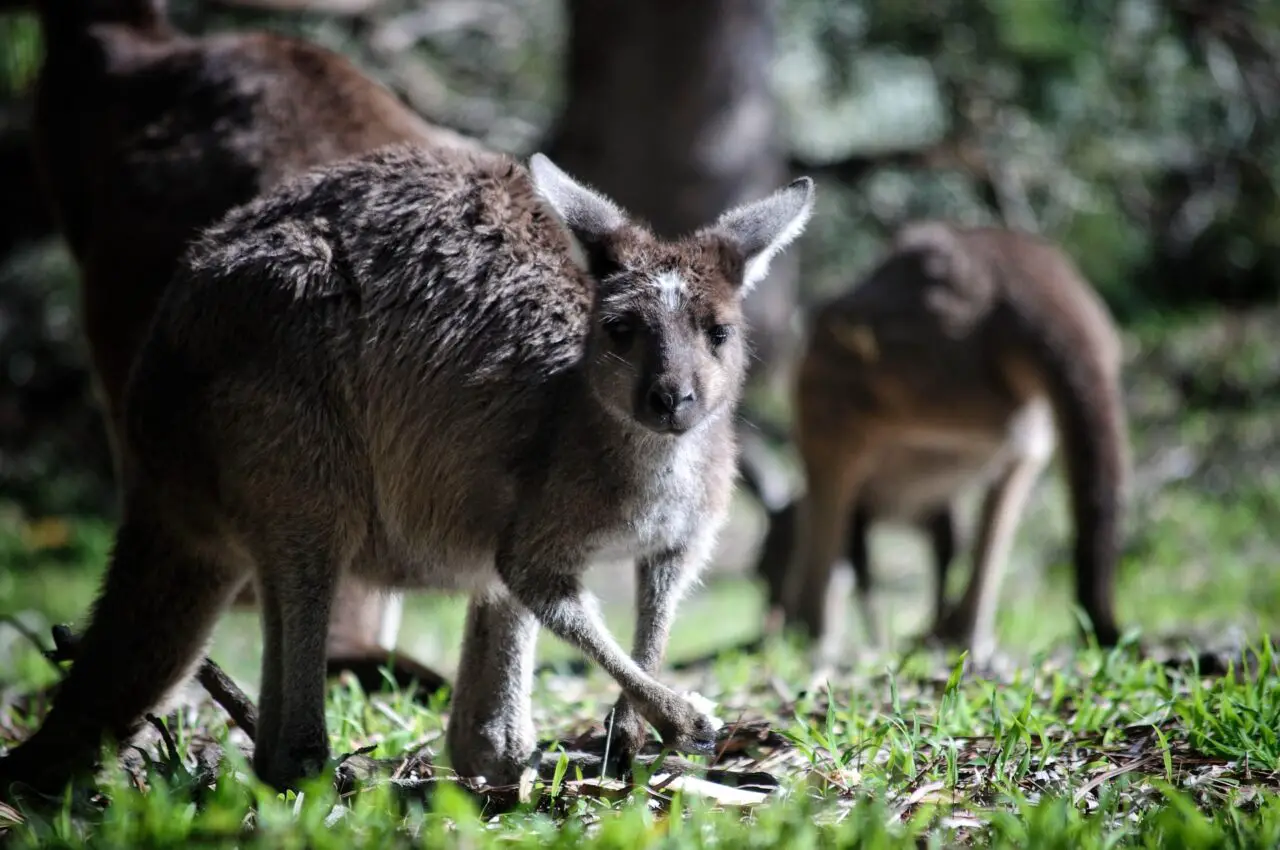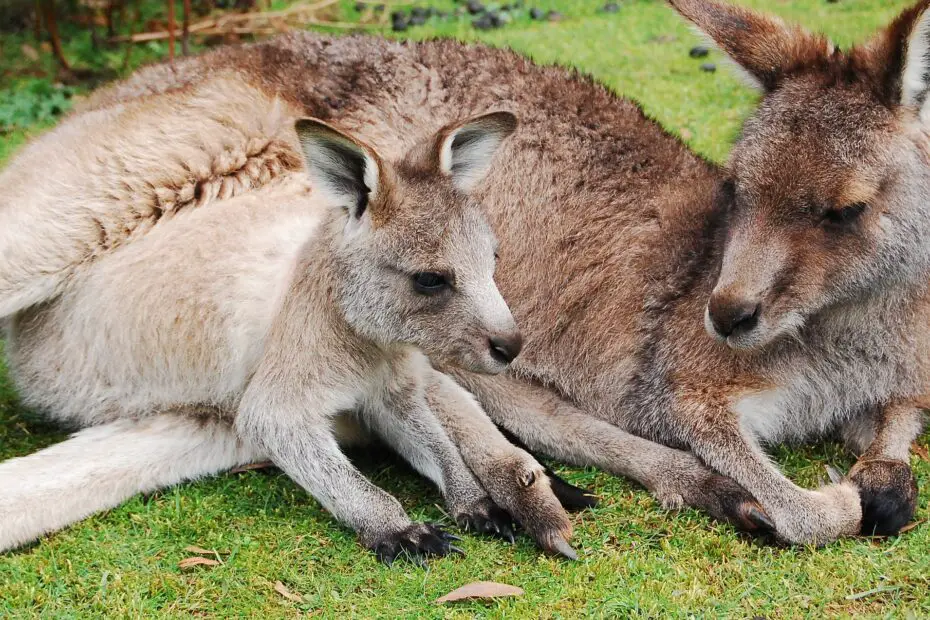Kangaroos aren’t ruminants, but give up food from the stomach as a green acidic substance, only to swallow it again immediately. The purpose of this action is not to allow certain bacteria to disappear through the intestines with the manure, but to bring it back to the front of the stomach. These bacteria help digest the food. But what does a kangaroo eat?
In old trade books one often reads that kangaroos die from jaw diseases of oral mucosa and throat. This is especially true if one gives the animals straw and the chaff-needled ears of our cereals. They hurt the oral mucosa, which easily leads to infections. Since knowing this and giving a more versatile and wisely chosen food, especially soft hay and alfalfa, such deaths are almost non-existent.
You may also want to know what snakes eat.
What does a kangaroo eat?
What does a kangaroo eat? Provide them always with plenty of fresh water. Remember that there is an extra need for fresh drinking water during the hot summer months. Wallabies drink an average of 1 liter of water per animal per day. Give the animals a good kangaroo pellet.
There are several manufacturers that produce special kangaroo pellets, but not all of them are equally good. Keep an eye on a high vitamin E and Selenium content. Vitamin E and Selenium this combination is known to play an important role in maintaining muscle volume and building it. As an antioxidant, vitamin E also makes an important contribution in muscle metabolism, particularly in the removal of combustion substances in the cell.
The lack of vitamin E (tocopherol) which, may or may not be accompanied by a lack of selenium, causes degenerative muscle and vascular injuries. Vitamin – E- deficiency can lead to muscular dystrophy (e.g., “white muscle disease”) in several species. Give them good quality fresh hay in both summer and winter.
Roughage is necessary for proper digestion. Broadly speaking, feed materials can be divided into two categories: concentrates and roughage.

Roughage
What does a kangaroo eat? Roughages are feed materials with a minimum fiber length of 8 mm. This fiber length of eight mm is necessary for proper gastrointestinal function. Fiber is broken down in the blind and colon and also stimulates intestinal movements. Good intestinal movements are necessary to mix the feed in the intestine with the intestinal juices and thus for optimal digestion and transport of the food pulp.
Feedstuffs such as grass, hay, and alfalfa are therefore roughage. Other feedstuffs then automatically fall under the category of concentrate. Thus, energy content per se is not a criterion for distinguishing roughage from concentrate. With this definition, it is therefore possible that, for example, grass in pasture is called roughage and artificially dried, finely chopped grass pressed into a chunk has become concentrate.
Many combinations of feedstuffs are possible for a well-balanced ration.It is very important that Kangaroos and Wallabies have year-round access to roughage. In addition to grass, they must have good quality hay. Also, alfalfa hay is an excellent forage that is eagerly eaten.
Branches of willow (possibly fruit tree wood)
Willow wood contains the substance acetylsalicylic acid. This is the active ingredient in Aspirienne and has an antipyretic and analgesic effect. However, the amount of acetysalicylic acid in willow wood is so small that it has absolutely no effect on the animal. Kangaroos/ wallabies love willow, also it is very healthy. Branches for chewing also contribute to the prevention of “Lumpy Jaw”.
Provide a good pasture with plenty of grass
A usual BG pasture mix is fine. Even better is a somewhat harder grass. Lawn grasses are neither suitable nor developed for consumption by animals. Animals love dandelions, which are also very suitable for animals. Dandelions are also used as a medicinal herb among other things because of its beneficial effects on liver and kidneys, applied to detoxify the body. Furthermore, the plant contains the substances such as, vitamins C,D,E , various B vitamins, choline, carotenes, potassium, sodium magnesium, iron, copper, zinc, calcium.
-Mineral block (Licking stone for cows or horses)
-Carrots (Source of beta- carotene).
Beta- carotene can be converted in the body to vitamin A. Vitamin A is needed, among other things, for the proper functioning of the eyes, especially for adjusting the eyes to darkness. Beta carotene is also an antioxidant: it protects cells in the body from free radicals. Also plays a role in resistance to infections and parasitic infections.
Lucerne: Lucerne hay in bales (naturally dried) are preferred.
What does a kangaroo eat? Lucerne hay is a high-protein roughage. Lucerne is grown by arable farmers on the heavy calcareous clay. Because alfalfa can have a taproot of three feet, it can also get its nutrition from this depth. Lucerne is rich in vitamins, minerals and trace elements. It is a high-protein product with high intake, high structural value and good digestibility of organic matter. This makes alfalfa a very healthy product. The coarse structure of alfalfa guarantees optimal gastrointestinal function.
Beware: Lucerne in plastic bags is not suitable. They often contain straw and other substances besides molasses. Molasses is a syrup/sugar-like substance which is not good for the animals.
